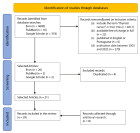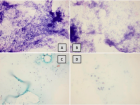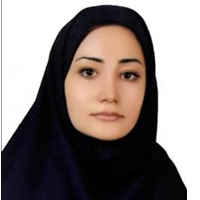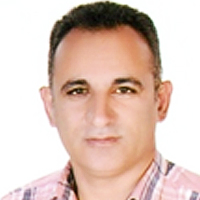Abstract
Review Article
Differential diagnosis of POLG related disorders: What to keep in mind when multiorgan system is involved?
Rajib Dutta*
Published: 09 June, 2021 | Volume 5 - Issue 1 | Pages: 048-054
Mitochondrial and lysosomal dysfunction accounts for a large group of inherited metabolic disorders most of which are due to a dysfunctional mitochondrial respiratory chain (MRC) leading to deficient energy production and defects in phagocytosis in endosomal-lysosomal pathway respectively. MRC function depends on the coordinated expression of both nuclear (nDNA) and mitochondrial (mtDNA) genomes. Thus, mitochondrial diseases can be caused by genetic defects in either the mitochondrial or the nuclear genome, or in the cross-talk between the two. The mitochondrial DNA depletion syndromes (MDSs) are a clinically heterogeneous group of disorders with an autosomal recessive pattern of inheritance that have onset in infancy or early childhood and are characterized by a reduced number of copies of mtDNA in affected tissues and organs. In this review article, we summarized the spectrum of mtDNA depletion disorders along with minor learning of lysosomal storage diseases. This current article offers a perspective on the role of genetics in medical practice and how this role may evolve over the next several years.
Read Full Article HTML DOI: 10.29328/journal.jnnd.1001050 Cite this Article Read Full Article PDF
Keywords:
Mitochondria; lysosome; mtDNA; Metabolic; mtDNA depletion
References
- Milone M, Benarroch EE, Wong LJ. POLG-related disorders: defects of the nuclear and mitochondrial genome interaction. Neurology. 2011; 77: 1847-1852. PubMed: https://pubmed.ncbi.nlm.nih.gov/22084276/
- Milone M, Massie R. Polymerase gamma 1 mutations: clinical correlations. Neurologist. 2010; 16: 84-91. PubMed: https://pubmed.ncbi.nlm.nih.gov/20220442/
- Wong LJ, Naviaux RK, Brunetti-Pierri N, Qing Zhang, Eric S Schmitt, et al. Molecular and clinical genetics of mitochondrial diseases due to POLG mutations. Hum Mutat. 2008; 29: E150-E172. PubMed: https://pubmed.ncbi.nlm.nih.gov/18546365/
- Darin N, Oldfors A, Moslemi AR, Holme E, Tulinius M. The incidence of mitochondrial encephalomyopathies in childhood: clinical features and morphological, biochemical, and DNA abnormalities. Ann Neurol. 2001; 49: 377-383. PubMed: https://pubmed.ncbi.nlm.nih.gov/11261513/
- Rahman S, Copeland WC. POLG-related disorders and their neurological manifestations. Nat Rev Neurol. 2019; 15: 40-52. PubMed: https://pubmed.ncbi.nlm.nih.gov/30451971/
- Saneto RP, Cohen BH, Copeland WC, Naviaux RK. Alpers-Huttenlocher syndrome. Pediatr Neurol. 2013; 48: 167-178. PubMed: https://pubmed.ncbi.nlm.nih.gov/23419467/
- Hikmat O, Tzoulis C, Knappskog PM, Johansson S, Boman H, et al. ADCK3 mutations with epilepsy, stroke-like episodes and ataxia: a POLG mimic? Eur J Neurol. 2016; 23: 1188-1194. PubMed: https://pubmed.ncbi.nlm.nih.gov/27106809/
- Antozzi C, Franceschetti S, Filippini G, B Barbiroli, M Savoiardo, et al. Epilepsia partialis continua associated with NADH-coenzyme Q reductase deficiency. J Neurol Sci. 1995; 129: 152-161. PubMed: https://pubmed.ncbi.nlm.nih.gov/7608730/
- Mameniškienė R, Wolf P. Epilepsia partialis continua: A review. Seizure. 2017; 44: 74-80. PubMed: https://pubmed.ncbi.nlm.nih.gov/28029552/
- Zhou Q, Lin Y, Ye J, Li L, Hu N, et al. Homozygous TBC1D24 Mutation in a Case of Epilepsia Partialis Continua. Front Neurol. 2018; 8: 750. PubMed: https://pubmed.ncbi.nlm.nih.gov/29416524/
- Dai LF, Fang F, Liu ZM, Shen DM, Ding CH, et al. Zhonghua Er Ke Za Zhi. 2019; 57: 211-216. PubMed: https://pubmed.ncbi.nlm.nih.gov/30818899/
- El-Hattab AW, Scaglia F. Mitochondrial DNA depletion syndromes: review and updates of genetic basis, manifestations, and therapeutic options. Neurotherapeutics. 2013; 10: 186-198. PubMed: https://pubmed.ncbi.nlm.nih.gov/23385875/
- Nogueira C, Almeida LS, Nesti C, Pezzini I, Videira A, et al. Syndromes associated with mitochondrial DNA depletion. Ital J Pediatr. 2014; 40: 34. PubMed: https://pubmed.ncbi.nlm.nih.gov/24708634/
- Saada A, Shaag A, Mandel H, Nevo Y, Eriksson S, et al. Mutant mitochondrial thymidine kinase in mitochondrial DNA depletion myopathy. Nat Genet. 2001; 29: 342-344. PubMed: https://pubmed.ncbi.nlm.nih.gov/11687801/
- Spinazzola A, Invernizzi F, Carrara F, Lamantea E, Donati A, et al. Clinical and molecular features of mitochondrial DNA depletion syndromes. J Inherit Metab Dis. 2009; 32: 143-158. PubMed: https://pubmed.ncbi.nlm.nih.gov/19125351/
- Buchaklian AH, Helbling D, Ware SM, Dimmock DP. Recessive deoxyguanosine kinase deficiency causes juvenile onset mitochondrial myopathy. Mol Genet Metab. 2012; 107: 92-94. PubMed: https://pubmed.ncbi.nlm.nih.gov/22622127/
- Bourdon A, Minai L, Serre V, Jean-Philippe J, Sarzi E, et al. Mutation of RRM2B, encoding p53-controlled ribonucleotide reductase (p53R2), causes severe mitochondrial DNA depletion. Nat Genet. 2007; 39: 776-780. PubMed: https://pubmed.ncbi.nlm.nih.gov/17486094/
- Lesko N, Naess K, Wibom R, Solaroli N, Nennesmo I, et al. Two novel mutations in thymidine kinase-2 cause early onset fatal encephalomyopathy and severe mtDNA depletion. Neuromuscul Disord. 2010; 20: 198-203. PubMed: https://pubmed.ncbi.nlm.nih.gov/20083405/
- Elpeleg O, Miller C, Hershkovitz E, Bitner-Glindzicz M, Bondi-Rubinstein G, et al. Deficiency of the ADP-forming succinyl-CoA synthase activity is associated with encephalomyopathy and mitochondrial DNA depletion. Am J Hum Genet. 2005; 76: 1081-1086. PubMed: https://pubmed.ncbi.nlm.nih.gov/15877282/
- Ostergaard E, Christensen E, Kristensen E, Mogensen B, Duno M, et al. Deficiency of the alpha subunit of succinate-coenzyme A ligase causes fatal infantile lactic acidosis with mitochondrial DNA depletion. Am J Hum Genet. 2007; 81: 383-387. PubMed: https://www.ncbi.nlm.nih.gov/pmc/articles/PMC1950792/
- Sarzi E, Bourdon A, Chrétien D, Zarhrate M, Corcos J, et al. Mitochondrial DNA depletion is a prevalent cause of multiple respiratory chain deficiency in childhood. J Pediatr. 2007; 150: 531-534.e5346. PubMed: https://pubmed.ncbi.nlm.nih.gov/17452231/
- Mandel H, Szargel R, Labay V, Elpeleg O, Saada A, et al. The deoxyguanosine kinase gene is mutated in individuals with depleted hepatocerebral mitochondrial DNA [published correction appears in Nat Genet. 2001; 29: 337-341. PubMed: https://pubmed.ncbi.nlm.nih.gov/11687800/
- Spinazzola A, Viscomi C, Fernandez-Vizarra E, Carrara F, D'Adamo P, et al. MPV17 encodes an inner mitochondrial membrane protein and is mutated in infantile hepatic mitochondrial DNA depletion. Nat Genet. 2006; 38: 570-575. PubMed: https://pubmed.ncbi.nlm.nih.gov/16582910/
- Zhang S, Li FY, Bass HN, Pursley A, Schmitt ES, et al. Application of oligonucleotide array CGH to the simultaneous detection of a deletion in the nuclear TK2 gene and mtDNA depletion. Mol Genet Metab. 2010; 99: 53-57. PubMed: https://pubmed.ncbi.nlm.nih.gov/19815440/
- Nishino I, Spinazzola A, Hirano M. Thymidine phosphorylase gene mutations in MNGIE, a human mitochondrial disorder. Science. 1999; 283: 689-692. PubMed: https://pubmed.ncbi.nlm.nih.gov/9924029/
- Shaibani A, Shchelochkov OA, Zhang S, Katsonis P, Lichtarge O, et al. Mitochondrial neurogastrointestinal encephalopathy due to mutations in RRM2B. Arch Neurol. 2009; 66: 1028-1032. PubMed: https://pubmed.ncbi.nlm.nih.gov/19667227/
- Dimmock DP, Zhang Q, Dionisi-Vici C, Carrozzo R, Shieh J, et al. Clinical and molecular features of mitochondrial DNA depletion due to mutations in deoxyguanosine kinase. Hum Mutat. 2008; 29: 330-331. PubMed: https://pubmed.ncbi.nlm.nih.gov/18205204/
- Qualls C, Kornfeld M, Joste N, Ali AM, Appenzeller O. MPV17-related hepatocerebral mitochondrial DNA depletion syndrome (MPV17-NNH) revisited. eNeurologicalSci. 2016; 2: 8-13. PubMed: https://pubmed.ncbi.nlm.nih.gov/29473055/
- El-Hattab AW, Wang J, Dai H, Almannai M, Staufner C, et al. MPV17-related mitochondrial DNA maintenance defect: New cases and review of clinical, biochemical, and molecular aspects. Hum Mutat. 2018; 39: 461-470. PubMed: https://pubmed.ncbi.nlm.nih.gov/29282788/
- Baumann M, Schreiber H, Schlotter-Weigel B, Löscher WN, Stucka R, et al. MPV17 mutations in juvenile- and adult-onset axonal sensorimotor polyneuropathy. Clin Genet. 2019; 95: 182-186. PubMed: https://pubmed.ncbi.nlm.nih.gov/30298599/
- Couser NL, Marchuk DS, Smith LD, Arreola A, Kaiser-Rogers KA, et al. Co-occurring Down syndrome and SUCLA2-related mitochondrial depletion syndrome. Am J Med Genet A. 2017; 173: 2720-2724. PubMed: https://pubmed.ncbi.nlm.nih.gov/28749033/
- Ballout RA, Al Alam C, Bonnen PE, Huemer M, El-Hattab AW, Shbarou R. FBXL4-Related Mitochondrial DNA Depletion Syndrome 13 (MTDPS13): A Case Report With a Comprehensive Mutation Review. Front Genet. 2019; 10: 39. PubMed: https://pubmed.ncbi.nlm.nih.gov/30804983/
- Landsverk ML, Zhang VW, Wong LC, Andersson HC. A SUCLG1 mutation in a patient with mitochondrial DNA depletion and congenital anomalies. Mol Genet Metab Rep. 2014; 1: 451-454. PubMed: https://pubmed.ncbi.nlm.nih.gov/27896121/
- Pitceathly RD, Smith C, Fratter C, He L, Craig K, et al. Adults with RRM2B-related mitochondrial disease have distinct clinical and molecular characteristics. Brain. 2012; 135(Pt 11): 3392-3403. PubMed: https://pubmed.ncbi.nlm.nih.gov/23107649/
- Madhok J, Leong J, Cohn J. Anesthetic Considerations for Liver Transplantation in a Patient with Mitochondrial Neurogastrointestinal Encephalopathy Syndrome. Cureus. 2019; 11: e5038. PubMed: https://pubmed.ncbi.nlm.nih.gov/31501730/
- Filosto M, Cotti Piccinelli S, Caria F, Cassarino SG, Baldelli E, et al. Mitochondrial Neurogastrointestinal Encephalomyopathy (MNGIE-MTDPS1). J Clin Med. 2018; 7: 389. PubMed: https://pubmed.ncbi.nlm.nih.gov/30373120/
- Wang HF, Wang J, Wang YL, Jian-Jian F, Gui-Lin M, et al. A novel thymidine phosphorylase mutation in a Chinese MNGIE patient. Acta Neurol Belg. 2017; 117: 259-267. PubMed: https://pubmed.ncbi.nlm.nih.gov/27709505/
- Yong FL, Wang CW, Tan KS. MicroRNA expression profile of a Malaysian Bajau family with familial mitochondrial neurogastrointestinal encephalomyopathy. Genet Mol Res. 2015; 14: 13172-13183. PubMed: https://pubmed.ncbi.nlm.nih.gov/26535630/
- Oskoui M, Davidzon G, Pascual J, Erazo R, Gurgel-Giannetti J, et al. Clinical spectrum of mitochondrial DNA depletion due to mutations in the thymidine kinase 2 gene. Arch Neurol. 2006; 63: 1122-1126. PubMed: https://pubmed.ncbi.nlm.nih.gov/16908738/
- Martín-Hernández E, García-Silva MT, Quijada-Fraile P, Rodríguez-García ME, Rivera H, et al. Myopathic mtDNA Depletion Syndrome Due to Mutation in TK2 Gene. Pediatr Dev Pathol. 2017; 20: 416-420. PubMed: https://pubmed.ncbi.nlm.nih.gov/28812460/
- Wang J, Kim E, Dai H, Stefans V, Vogel H, et al. Clinical and molecular spectrum of thymidine kinase 2-related mtDNA maintenance defect. Mol Genet Metab. 2018; 124: 124-130. PubMed: https://pubmed.ncbi.nlm.nih.gov/29735374/
- El-Hattab AW, Craigen WJ, Scaglia F. Mitochondrial DNA maintenance defects. Biochim Biophys Acta Mol Basis Dis. 2017; 1863: 1539-1555. PubMed: https://pubmed.ncbi.nlm.nih.gov/28215579/
- Matic S, Jiang M, Nicholls TJ, Dirksen-Schwanenland C, Polosa PL, et al. Mice lacking the mitochondrial exonuclease MGME1 accumulate mtDNA deletions without developing progeria. Nat Commun. 2018; 9: 1202. PubMed: https://pubmed.ncbi.nlm.nih.gov/29572490/
- Rusecka J, Kaliszewska M, Bartnik E, Tońska K. Nuclear genes involved in mitochondrial diseases caused by instability of mitochondrial DNA. J Appl Genet. 2018; 59: 43-57. PubMed: https://pubmed.ncbi.nlm.nih.gov/29344903/
- Baertling F, Rodenburg RJ, Schaper J, Smeitink JA, Koopman WJH, et al. A guide to diagnosis and treatment of Leigh syndrome. J Neurol Neurosurg Psychiatry. 2014; 85: 257-265. PubMed: https://pubmed.ncbi.nlm.nih.gov/23772060/
- Suomalainen A, Majander A, Wallin M, Setälä K, Kontula K, et al. Autosomal dominant progressive external ophthalmoplegia with multiple deletions of mtDNA: clinical, biochemical, and molecular genetic features of the 10q-linked disease. Neurology. 1997; 48: 1244-1253. PubMed: https://pubmed.ncbi.nlm.nih.gov/9153451/
- Kiechl S, Horváth R, Luoma P, Kiechl-Kohlendorfer U, Wallacher-Scholz B, et al. Two families with autosomal dominant progressive external ophthalmoplegia. J Neurol Neurosurg Psychiatry. 2004; 75: 1125-1128. PubMed: https://pubmed.ncbi.nlm.nih.gov/15258213/
- Galimberti V, Tironi R, Lerario A, Scali M, Del Bo R, et al. Value of insoluble PABPN1 accumulation in the diagnosis of oculopharyngeal muscular dystrophy. Eur J Neurol. 2020; 27: 709-715. PubMed: https://pubmed.ncbi.nlm.nih.gov/31769567/
- Kelley RI, Robinson D, Puffenberger EG, Strauss KA, Morton DH. Amish lethal microcephaly: a new metabolic disorder with severe congenital microcephaly and 2-ketoglutaric aciduria. Am J Med Genet. 2002; 112: 318-326. PubMed: https://pubmed.ncbi.nlm.nih.gov/12376931/
- Siu VM, Ratko S, Prasad AN, Prasad C, Rupar CA. Amish microcephaly: Long-term survival and biochemical characterization. Am J Med Genet A. 2010; 152A: 1747-1751.
- Bottega R, Perrone MD, Vecchiato K, Taddio A, Sabui S, et al. Functional analysis of the third identified SLC25A19 mutation causative for the thiamine metabolism dysfunction syndrome 4. J Hum Genet. 2019; 64: 1075-1081. PubMed: https://www.ncbi.nlm.nih.gov/pmc/articles/PMC6886476/
- Heighton JN, Brady LI, Sadikovic B, Bulman DE, Tarnopolsky MA. Genotypes of chronic progressive external ophthalmoplegia in a large adult-onset cohort. Mitochondrion. 2019; 49: 227-231. PubMed: https://pubmed.ncbi.nlm.nih.gov/31521625/
- Saldaña-Martínez A, Muñoz ML, Pérez-Ramírez G, et al. Whole sequence of the mitochondrial DNA genome of Kearns Sayre Syndrome patients: Identification of deletions and variants. Gene. 2019; 688: 171-181. PubMed: https://pubmed.ncbi.nlm.nih.gov/30528267/
- Oláhová M, Ceccatelli Berti C, Collier JJ, Alston CL, Jameson E, et al. Molecular genetic investigations identify new clinical phenotypes associated with BCS1L-related mitochondrial disease. Hum Mol Genet. 2019; 28: 3766-3776. PubMed: https://pubmed.ncbi.nlm.nih.gov/31435670/
- Baker RA, Priestley JRC, Wilstermann AM, Reese KJ, Mark PR. Clinical spectrum of BCS1L Mitopathies and their underlying structural relationships. Am J Med Genet A. 2019; 179: 373-380. PubMed: https://pubmed.ncbi.nlm.nih.gov/30582773/
- Valnot I, Osmond S, Gigarel N, Mehaye B, Amiel J, et al. Mutations of the SCO1 gene in mitochondrial cytochrome c oxidase deficiency with neonatal-onset hepatic failure and encephalopathy. Am J Hum Genet. 2000; 67: 1104-1109. PubMed: https://pubmed.ncbi.nlm.nih.gov/11013136/
- Hlynialuk CJ, Ling B, Baker ZN, Cobine PA, Yu LD, et al. The Mitochondrial Metallochaperone SCO1 Is Required to Sustain Expression of the High-Affinity Copper Transporter CTR1 and Preserve Copper Homeostasis. Cell Rep. 2015; 10: 933-943. PubMed: https://pubmed.ncbi.nlm.nih.gov/25683716/
- Nelvagal HR, Lange J, Takahashi K, Tarczyluk-Wells MA, Cooper JD. Pathomechanisms in the neuronal ceroid lipofuscinoses. Biochim Biophys Acta Mol Basis Dis. 2020; 1866: 165570. PubMed: https://pubmed.ncbi.nlm.nih.gov/31678162/
- Butz ES, Chandrachud U, Mole SE, Cotman SL. Moving towards a new era of genomics in the neuronal ceroid lipofuscinoses. Biochim Biophys Acta Mol Basis Dis. 2020; 1866: 165571. PubMed: https://pubmed.ncbi.nlm.nih.gov/31678159/
- Hawkins-Salsbury JA, Cooper JD, Sands MS. Pathogenesis and therapies for infantile neuronal ceroid lipofuscinosis (infantile CLN1 disease). Biochim Biophys Acta. 2013; 1832: 1906-1909. PubMed: https://pubmed.ncbi.nlm.nih.gov/23747979/
- Nickel M, Simonati A, Jacoby D, Lezius S, Kilian D, et al. Disease characteristics and progression in patients with late-infantile neuronal ceroid lipofuscinosis type 2 (CLN2) disease: an observational cohort study. Lancet Child Adolesc Health.. 2018; 2: 582-590. PubMed: https://pubmed.ncbi.nlm.nih.gov/30119717/
- Shoffner JM, Lott MT, Lezza AM, Seibel P, Ballinger SW, et al. Myoclonic epilepsy and ragged-red fiber disease (MERRF) is associated with a mitochondrial DNA tRNA(Lys) mutation. Cell. 1990; 61: 931-937. PubMed: https://pubmed.ncbi.nlm.nih.gov/2112427/
- Ikeda T, Osaka H, Shimbo H, Tajika M, Yamazaki M, et al. Mitochondrial DNA 3243A>T mutation in a patient with MELAS syndrome. Hum Genome Var. 2018; 5: 25. PubMed: https://pubmed.ncbi.nlm.nih.gov/30210801/
- Rozenberg R, Kok F, Burin MG, Sá Miranda MC, Vasques C, et al. Diagnosis and molecular characterization of non-classic forms of Tay-Sachs disease in Brazil. J Child Neurol. 2006; 21: 540-544. PubMed: https://pubmed.ncbi.nlm.nih.gov/16948947/
- Liu M, Huang D, Wang H, Zhao L, Wang Q, Chen X. Clinical and Molecular Characteristics of Two Chinese Children with Infantile Sandhoff Disease and Review of the Literature. J Mol Neurosci. 2020; 70: 481-487. PubMed: https://pubmed.ncbi.nlm.nih.gov/31919734/
- Khan A, Sergi C. Sialidosis: A Review of Morphology and Molecular Biology of a Rare Pediatric Disorder. Diagnostics (Basel). 2018; 8: 29. PubMed: https://pubmed.ncbi.nlm.nih.gov/29693572/
- Sláma T, Garbade SF, Kölker S, Hoffmann GF, Ries M. Quantitative natural history characterization in a cohort of 142 published cases of patients with galactosialidosis-A cross-sectional study. J Inherit Metab Dis. 2019; 42: 295-302. PubMed: https://pubmed.ncbi.nlm.nih.gov/30693535/
- Cohen BH, Chinnery PF, Copeland WC. POLG-Related Disorders. In: GeneReviews at GeneTests: Medical Genetics Information Resource (database online). Copyright University of Washington, Seattle. 1993-2018. PubMed: http://www.ncbi.nlm.nih.gov/books/NBK26471/
Similar Articles
-
Protection from the Pathogenesis of Neurodegenerative Disorders, including Alzheimer’s Disease, Amyotrophic Lateral Sclerosis, Huntington’s Disease, and Parkinson’s Diseases, through the Mitigation of Reactive Oxygen SpeciesSamskruthi Madireddy*,Sahithi Madireddy. Protection from the Pathogenesis of Neurodegenerative Disorders, including Alzheimer’s Disease, Amyotrophic Lateral Sclerosis, Huntington’s Disease, and Parkinson’s Diseases, through the Mitigation of Reactive Oxygen Species. . 2019 doi: 10.29328/journal.jnnd.1001026; 3: 148-161
-
Obesity may increase the prevalence of Parkinson’s Disease (PD) while PD may reduce obesity index in patientsLi Xue Zhong*,Muslimat Kehinde Adebisi,Liuyi,Mzee Said Abdulraman Salim,Abdul Nazif Mahmud,Aaron Gia Kanton,Abdullateef Taiye Mustapha. Obesity may increase the prevalence of Parkinson’s Disease (PD) while PD may reduce obesity index in patients. . 2020 doi: 10.29328/journal.jnnd.1001030; 4: 024-028
-
Impact of mandibular advancement device in quantitative electroencephalogram and sleep quality in mild to severe obstructive sleep apneaCuspineda-Bravo ER*,García- Menéndez M,Castro-Batista F,Barquín-García SM,Cadelo-Casado D,Rodríguez AJ,Sharkey KM. Impact of mandibular advancement device in quantitative electroencephalogram and sleep quality in mild to severe obstructive sleep apnea. . 2020 doi: 10.29328/journal.jnnd.1001041; 4: 088-098
-
Differential diagnosis of POLG related disorders: What to keep in mind when multiorgan system is involved?Rajib Dutta*. Differential diagnosis of POLG related disorders: What to keep in mind when multiorgan system is involved?. . 2021 doi: 10.29328/journal.jnnd.1001050; 5: 048-054
-
Nutritional interventions for the prevention and treatment of neurological disorders such as anxiety, bipolar disorder, depression, epilepsy, multiple sclerosis, and schizophreniaSahithi Madireddy*,Samskruthi Madireddy. Nutritional interventions for the prevention and treatment of neurological disorders such as anxiety, bipolar disorder, depression, epilepsy, multiple sclerosis, and schizophrenia. . 2022 doi: 10.29328/journal.jnnd.1001070; 6: 052-071
-
Stroke Mimics: Insights from a Retrospective Neuroimaging StudyLucia Monti*, Davide del Roscio, Francesca Tutino, Tommaso Casseri, Umberto Arrigucci, Matteo Bellini, Maurizio Acampa, Sabina Bartalini, Carla Battisti, Giovanni Bova, Alessandro Rossi. Stroke Mimics: Insights from a Retrospective Neuroimaging Study. . 2023 doi: 10.29328/journal.jnnd.1001083; 7: 094-103
-
The Neuroprotective Role of TERT Influences the Expression of SOD1 in Motor Neurons and Mouse Brain: Implications for fALSAilone Tichon, Erez Eitan, Sylvia Tsory, Elie Beit-Yanai, Esther Priel*. The Neuroprotective Role of TERT Influences the Expression of SOD1 in Motor Neurons and Mouse Brain: Implications for fALS. . 2023 doi: 10.29328/journal.jnnd.1001085; 7: 113-125
-
Biomarkers for High Metabolic Burden in Neurologic DiseaseVictor B Stolberg*. Biomarkers for High Metabolic Burden in Neurologic Disease. . 2024 doi: 10.29328/journal.jnnd.1001091; 8: 012-013
-
The Potential Use of Dimethyltryptamine against Ischemia-reperfusion Injury of the BrainAttila Kovacs, Anna Mathe, Ede Frecska*. The Potential Use of Dimethyltryptamine against Ischemia-reperfusion Injury of the Brain. . 2024 doi: 10.29328/journal.jnnd.1001097; 8: 050-056
Recently Viewed
-
Impact of Moringa oleifera Leaf Flour supplement on Weight Gain in Moderately Acutely Malnourished Children in BeninLaleye Flora Tinouade Founmilayo*, Fanou Fogny Nadia and Kayode Polycarpe. Impact of Moringa oleifera Leaf Flour supplement on Weight Gain in Moderately Acutely Malnourished Children in Benin. Arch Food Nutr Sci. 2023: doi: 10.29328/journal.afns.1001052; 7: 070-077
-
Drug Rehabilitation Centre-based Survey on Drug Dependence in District Shimla Himachal PradeshKanishka Saini,Palak Sharma,Bhawna Sharma*,Atul Kumar Dubey,Muskan Bhatnoo,Prajkta Thakur,Vanshika Chandel,Ritika Sinha. Drug Rehabilitation Centre-based Survey on Drug Dependence in District Shimla Himachal Pradesh. J Addict Ther Res. 2025: doi: 10.29328/journal.jatr.1001032; 9: 001-006
-
Feature Processing Methods: Recent Advances and Future TrendsShiying Bai,Lufeng Bai*. Feature Processing Methods: Recent Advances and Future Trends. J Clin Med Exp Images. 2025: doi: 10.29328/journal.jcmei.1001035; 9: 010-014
-
Relationship between Vitamin D Deficiency and Lipopolysaccharides Porphyromonas gingivalis Bacteria in Stunting ChildrenErwin Gunawan*,Ria Puspitawati. Relationship between Vitamin D Deficiency and Lipopolysaccharides Porphyromonas gingivalis Bacteria in Stunting Children. Ann Biomed Sci Eng. 2024: doi: 10.29328/journal.abse.1001033; 8: 059-065
-
Addiction to self-strangulation: a case-reportAurely Ameller*,Yann Le Strat,Marion Cadranel,Celine Portalier, Caroline Dubertret. Addiction to self-strangulation: a case-report . J Addict Ther Res. 2017: doi: 10.29328/journal.jatr.1001003; 1: 016-021
Most Viewed
-
Evaluation of Biostimulants Based on Recovered Protein Hydrolysates from Animal By-products as Plant Growth EnhancersH Pérez-Aguilar*, M Lacruz-Asaro, F Arán-Ais. Evaluation of Biostimulants Based on Recovered Protein Hydrolysates from Animal By-products as Plant Growth Enhancers. J Plant Sci Phytopathol. 2023 doi: 10.29328/journal.jpsp.1001104; 7: 042-047
-
Sinonasal Myxoma Extending into the Orbit in a 4-Year Old: A Case PresentationJulian A Purrinos*, Ramzi Younis. Sinonasal Myxoma Extending into the Orbit in a 4-Year Old: A Case Presentation. Arch Case Rep. 2024 doi: 10.29328/journal.acr.1001099; 8: 075-077
-
Feasibility study of magnetic sensing for detecting single-neuron action potentialsDenis Tonini,Kai Wu,Renata Saha,Jian-Ping Wang*. Feasibility study of magnetic sensing for detecting single-neuron action potentials. Ann Biomed Sci Eng. 2022 doi: 10.29328/journal.abse.1001018; 6: 019-029
-
Pediatric Dysgerminoma: Unveiling a Rare Ovarian TumorFaten Limaiem*, Khalil Saffar, Ahmed Halouani. Pediatric Dysgerminoma: Unveiling a Rare Ovarian Tumor. Arch Case Rep. 2024 doi: 10.29328/journal.acr.1001087; 8: 010-013
-
Physical activity can change the physiological and psychological circumstances during COVID-19 pandemic: A narrative reviewKhashayar Maroufi*. Physical activity can change the physiological and psychological circumstances during COVID-19 pandemic: A narrative review. J Sports Med Ther. 2021 doi: 10.29328/journal.jsmt.1001051; 6: 001-007

HSPI: We're glad you're here. Please click "create a new Query" if you are a new visitor to our website and need further information from us.
If you are already a member of our network and need to keep track of any developments regarding a question you have already submitted, click "take me to my Query."



















































































































































